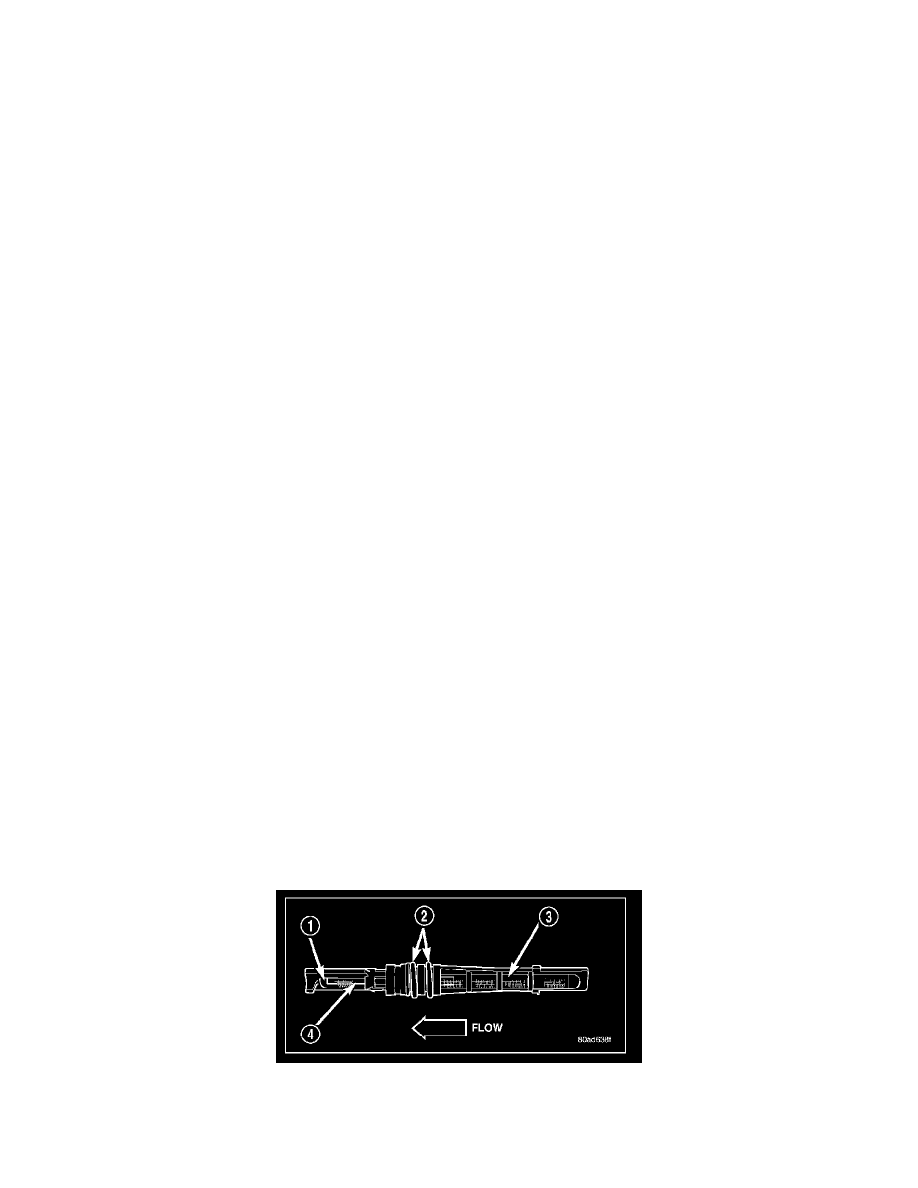Dakota 2WD V8-4.7L VIN J (2005)

be routed so they are at least 80 millimeters (3 inches) away from the exhaust manifold(s) and exhaust pipe(s).
High pressures are produced in the refrigerant system when the A/C compressor is operating. Extreme care must be exercised to make sure that each of
the refrigerant system connections is pressure-tight and leak free. It is a good practice to inspect all flexible hose refrigerant lines at least once a year to
make sure they are in good condition and properly routed.
The refrigerant lines and hoses are coupled to other A/C system components with block-type and quick-connect type fittings. Flat gaskets and O-rings are
used to mate the refrigerant line fittings with A/C system components to ensure the integrity of the refrigerant system.
The refrigerant lines and hoses cannot be repaired and, if faulty or damaged, they must be replaced.
Line-A/C Discharge
The A/C discharge line is the refrigerant line that carries refrigerant from the A/C compressor to the A/C condenser.
CAUTON: Use only O-ring seals specified for the vehicle. Failure to use the correct O-ring seal will cause the refrigerant system connections to leak.
The A/C discharge line has no serviceable parts except for the rubber O-ring seals and gaskets. The O-ring seals used on the connections are made from
a special type of rubber not affected by R-134a refrigerant. The O-ring seals and gaskets must be replaced whenever the A/C discharge line is removed
and installed.
If the A/C discharge line is found to be leaking or is damaged, it must be replaced.
Line-A/C Liquid
The A/C liquid line is the refrigerant line that carries refrigerant from the A/C condenser to the A/C evaporator. The A/C liquid line uses a spring-lock
type refrigerant line coupler to connect it to the A/C evaporator. The A/C liquid line is made from light-weight aluminum and uses braze-less fittings.
The A/C liquid line includes the high-side service port, the fixed A/C orifice tube and a fitting for the A/C pressure transducer.
CAUTION: Use only O-ring seals specified for the vehicle. Failure to use the correct O-ring seal will cause the refrigerant system connections to leak.
The A/C liquid line has no serviceable parts except for the rubber O-ring seals and gasket, high-side service port valve, cap and secondary retaining clip.
The O-ring seals used on the connections are made from a special type of rubber not affected by R-134a refrigerant. The O-ring seals and gasket must be
replaced whenever the A/C liquid line is removed and installed.
If the A/C liquid line is found to be leaking or is damaged, it must be replaced.
Line-A/C Suction
The A/C suction line is the refrigerant line that carries refrigerant from the A/C accumulator to the A/C compressor.
CAUTION: Use only O-ring seals specified for the vehicle. Failure to use the correct O-ring seals will cause the refrigerant system connections to leak.
The A/C suction line has no serviceable parts except for the rubber O-ring seals and gaskets. The O-ring seals used on the connections are made from a
special type of rubber not affected by R-134a refrigerant. The O-ring seals and gaskets must be replaced whenever the A/C suction line is removed and
installed.
If the A/C suction line is found to be leaking or is damaged, it must be replaced.
Tube-A/C Orifice
The fixed A/C orifice tube is installed in the A/C liquid line and provides a restriction in the liquid refrigerant line between the A/C condenser and the
A/C evaporator. This restriction established the pressure differential between the high and low-pressure sides of the A/C system. The A/C orifice tube
includes a diffuser screen (1), O-ring seals (2) to seal it to the inner wall of the A/C liquid line, an inlet filter screen (3) and the fixed orifice (4).
